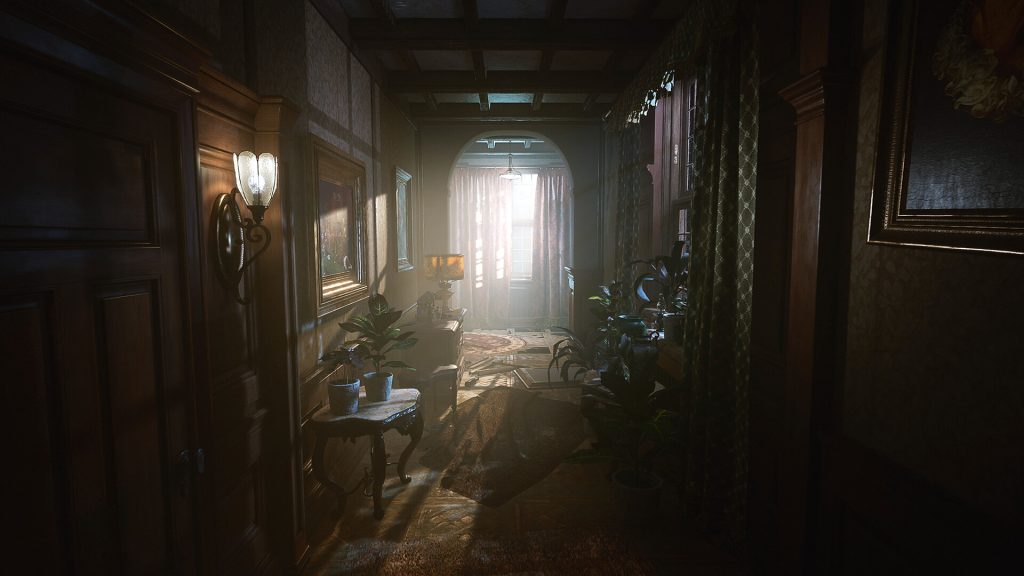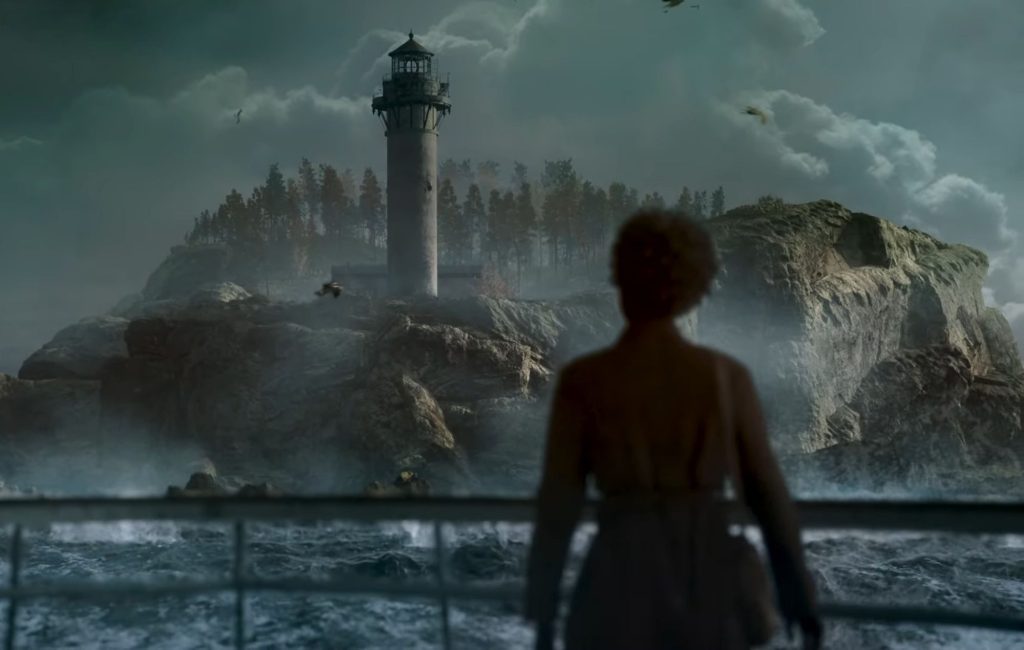Layers Of Fear showcases why Unreal Engine 5 is going to elevate horror in every way imaginable.
Layers of Fear is already a great series, it has puzzles, some horror elements, but overall the series does a good job of being “horror” without jump scares or threats (most of the time). The franchise’s general concept is pretty simple: make a mostly realistic world with a very relatable story, and watch as a character goes insane while their real world falls apart. It’s a great series, about the only thing to make it better…would be to step up the visuals to make them even more realistic/chilling.
The newly revamped Layers of Fear does exactly this. Combining the two previous releases with all the DLC and adding in a new protagonist, Layers of Fear hits new heights by revamping the previous releases in one streamlined collection.Thanks to the new Unreal Engine, the game looks photorealistic. So realistic that I was walking down hallways and taking pictures in awe of just how incredible everything looks. It looks like you’re literally peeking through a window and watching things unfold. Then the horrific monsters peek out their heads and scare the absolute shit out of you.
One thing I found particularly neat is how Layers of Fear is always hiding clues right in front of your face. While you’re admiring the textures on a chair, you could very easily see something hidden in the painting next to it; or markings on walls that you should probably pay attention to. None of this is oddly placed, it looks like someone literally took a real life picture and added these details to it, so you really need to pay careful attention because nothing will “glow” and say “look at me!” a majority of the time.
Bloober has always been great at lighting, and the upgrades made on this new Layers of Fear is absolutely breathtaking. I could look up at the lights and see the old fluorescent bulbs arc. It was impressive to see how the blinking of bulbs really affected the whole room. Some lights were behind shades and instead of direct light, you could see it hit the shade and spread out through it, leaving a warm lit area vs a harshly lit picture.

In one instance there was a hallway I was walking through and the only light in this area was the moon rays that were beaming through the windows. You could see it lighting up dust that was floating in the hallway, but also how it subtly lit up objects and created mysterious shadows in the room.
Then there is the concept of an eerie feeling with lights getting brighter or outright shattering in a room as spirits and darkness overwhelmed your character. At one point in the first (!!) chapter I was figuring out a puzzle and roaming about the house. Some lights blasted out and I didn’t think much of it, but as I walked by a piano I caught something out of the corner of my eye; a shadowy figure.
I did a double take, and thought to myself “nah, I’m safe here, I wasn’t even being chased.” Then lightning blasted through the window and the figure lit up. It was the monster (I won’t say which one) and I’ve never bolted out of a room so fast. They didn’t even move! It was just sitting there in darkness, very dimly lit by a candle on my side of the room. I could barely make out the face and eyes watching me, but that quick flash of light made it clear I shouldn’t be fiddling around with in-game notes at the moment.
Just the simple fact that lighting is so well done, you end up questioning yourself and the things you see. Is that shadowy figure an actual monster, or is it just a hat sitting on a rack? Part two does even more puzzles and plays with light even more, which allows them to really hide details within view and you don’t even know it.
Layers of Fear already had great sound design to begin with, but adding that in with the intense realistic graphics is incredible. The crack of thunder shortly after lightning lit up the room, footsteps in hallways, the slamming of doors, and even the crying of potential enemies in the distance is all so well done.
I was being chased by an enemy and you could tell how far away she was by the footsteps and growling noises she made. I came upon locks and doors, and while figuring out the combinations I could hear her getting closer and closer. It’s incredibly intense when you just barely see the lock fall and the door close to give you safety. It’s even more intense to get to that point and watch the door totally shatter with a loud bang as she blasts through the door and ruins any safety you felt.

In terms of content, simply looking good isn’t the only new thing added to Layers Of Fear.
The game offers a new story driven aspect in “The Writer,” which honestly is a lot more than it seems. Instead of simply throwing the two games and the DLC’s at you, the game opens with new content which functions as a way to tie the games together into one cohesive story. You start with the Writer with a ton of questions to be asked about what exactly the character is doing, which then leads into the first overall game. From there you jump back and forth between chapters, each time slowly learning something new about the writer.
It’s really neat how they took all the content and previous games and made it into one longer title thanks to this new content.
On the technical side of things, I met very few issues when playing through the entire game. I had some extremely minor graphical issues such as object piecing through each other, or floating objects in hallways, but nothing game breaking. Overall, it feels like a very polished and well done visual showcase of Unreal Engine 5. That being said, Layers of Fear is very much a “walking simulator” so there aren’t a whole lot of mechanical things that could go wrong.
For those new to Layers Of Fear, the game revolves around the “endless hallway” mechanic of gameplay. Every time you turn your back, open a new door, or wander off somewhere there is a chance that what is behind you is not what you remember. For example there was a room I entered that had something of interest in the center, as I approached it I heard the enemy start to run at me. Instinct is for me to turn around and run, so I tried, but once I turned around there was no longer a door, instead it was a wall. I thought I was meeting my demise at this point so I turned around to accept it, only to realize I was now in an entirely new room and no monster was there.
Even simple things like randomly realizing the roof above you is no longer a roof, or a picture frame opens a door, it’s all crafted so well. I felt that with the power of SSD it made these transitions all the more smooth. Half the time you don’t realize it’s happening, other times there is a screen tear which I felt was mostly intentional to tell you something had just changed.
One of my minor gripes about Layers of Fear in general is that while these moving rooms are fun and trippy, it kind of keeps pushing you forward no matter what. If I’m looking for particular collectibles and accidentally trigger one of these events it closes me off from going back, so any collectibles in that area are now locked off until I replay the chapter. This is somewhat troublesome with the new story content because I felt like I was finding the information I needed to keep the story going, but at one point it felt like it jumped extremely far ahead. I wasn’t sure if I missed something or what, but what was happening made no sense to me until I replayed a few chapters and collected some additional notes to explain it. And I feel like this issue could potentially spread to the game for new players, if you miss a key object you could very easily miss pieces of information that explain the overall story.
Overall if you enjoyed Layers of Fear before, you’ll love what they have done with this new iteration. It is a great look into what the future holds for horror games and Unreal Engine 5, but more importantly is a well polished and fluent experience. You are not playing two separate games, you are playing one straight experience and it’s all tied together with a nice bow in The Writer. There are some minor surprises for fans of the series that we won’t spoil here.

